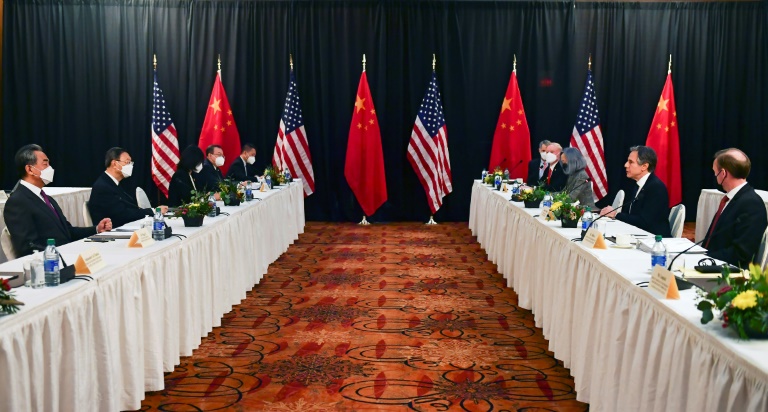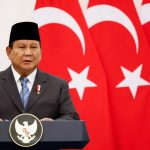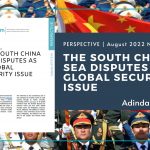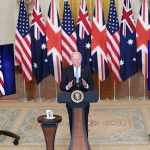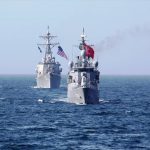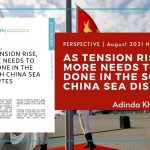The global pandemic has contributed to the rising tension between Washington and Beijing. During the Trump administration, the relations between the two was reportedly at their lowest point. The disputes in the south china sea have long been the centre of contention between the two giants. Beijing objects to the presence of the U.S Military in the sea. the trouble waters also involved other five countries, the Philippines, Vietnam, Taiwan, Malaysia, Brunei and mostly welcome the presence of the US.
Beijing’s assertiveness reflected in its activities in the disputed islands. Beijing seized the Scarborough shoals in 2012 with a constant presence of a coast guard and has the control ever since. It has also been dragging and an artificial – island building in the Spratlys for 3.200 acres of new land since 2013. Later in 2014, China was involved in the Haiyang Shiyou-981 oil rig standoff with Vietnam. HYSY – 981 was located in 120 nautical miles east of Vietnam’s Ly Son Island and 180 nautical miles south of Hainan, which fell within the maximum hypothetical entitlements of both China and Vietnam under the 1982 United Nations Convention on the Law of the Sea (UNCLOS). Beijing has reportedly parked it for weeks in waters Vietnam considers its own.
In late 2020, while other countries were distracted by the pandemic, Beijing moved to establish new administrative districts for the Spratly and Paracel archipelagos and named 80 islands and other geographical features in the sea, claiming sovereignty over underwater features along the way. The then US Secretary of State Mike Pompeo, as quoted by the Strait Times, had warned ASEAN Foreign Ministers that Beijing had moved to take advantage of the pandemic to push its territorial ambitions in the South China Sea. Mr Pompeo, in a statement also said, “The world will not allow Beijing to treat the South China Sea as its maritime empire.” Foreign Minister Wang Yi, on the other hand, stated that Beijing has been working with ASEAN countries to combat the coronavirus, he also stated, “There is nothing to support the claim that China is using Covid-19 to expand its presence in the South China Sea.”
The global pandemic seems to play role in the rising tension between the two. In late January 2021, Taiwan reported that Chinese air force aircraft flew into the southwestern corner of its air defence identification zone, Taiwan-controlled Pratas Islands, including fighter jets and nuclear-capable H-6 bombers.
It was reported that Beijing intends to stop the US military to enter the South China Sea, according to an anonymous source who spoke to Reuters, who was unauthorized to speak to the media. The US Navy regularly conducts Freedom of Navigation (FON) operations near the islands that Beijing occupies.
FON operation was prompted by Washington’s concern over the proliferation of excessive maritime claims and its impact on national security and international trade, also to send a clear message that all nations are obliged to obey the International Law of the Sea as codified in UNCLOS, as well as asserts its rights to traverse the waters aligned with international law.
It also challenged the claims from China, including China’s demand that foreign warships obtain prior permission from Beijing for “innocent passage” through China’s territorial sea.
Disagreement over FON operations between Beijing and Washington is one of the contributing factors to the barbs being traded by the two giants in the South China Sea issue. While China insists that it supports the FON operations, as President Xi Jinping once stated, “There has been no problem with the maritime navigation or overland flights, nor there will ever be in the future.” However, it is clear that the two countries have different view on FON operations. As China’s Ministry of Foreign Affairs claimed, U.S. FONOPs have “gone beyond the scope of freedom of navigation. It is a political provocation, and the purpose is to test China’s response.”
Some may question if the tension with Beijing may still occur under President Biden Administration. Recently, in his visit to Japan, the US Secretary of State Antony Blinken, along with Defense Secretary Lloyd Austin indicates that China’s claims in both the South China Sea and the East China Sea have become a priority issue.
In the statement issued with their Japanese counterparts, Blinken and Austin said, “China’s behaviour, where inconsistent with the existing international order, presents political, economic, military and technological challenges to the alliance and to the international community.” During the visit, Blinken also warned China against using “coercion and aggression” .
The south china sea has become a flash point in the US-China ties. The visit to Tokyo by Blinken and Austin shows the support for Asian alliances. The issue pertaining to the disputes in the south china sea remains a concern for Washington under the Biden administration. It is expected that Washington, under President Biden administration will keep challenging Beijing on Freedom of Navigation. While the move from Washington may give more reassurance for its allies in the pacific, this potentially adds the tension between Beijing and Washington.
